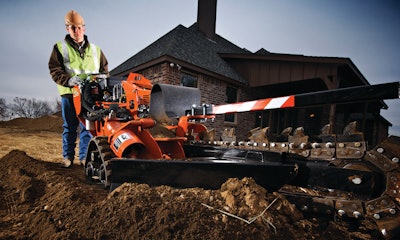
Safety is a personal decision. The choice to follow proper operating procedures protects not only the operator, but everyone around them, from co-workers to bystanders.
Listed below are seven primary safety concerns that we as operators, supervisors and managers must consider to help ensure a safe working environment.
1. Awareness — Many accidents could be prevented by simply following the operating procedures and policies outlined by the equipment manufacturer and employer. This includes all aspects of the job.
2. Pre-Work Inspection — Before beginning work with a piece of equipment, the operator needs to read and understand the operator’s manual for that specific piece of equipment.
Next, the unit must be in good operating condition. Make sure all guards and shields are in place. Check for leaks, but be cautious with pressurized hydraulic systems. Never use your bare hands; high-pressure fluid escaping from a small hole in a hose or fitting can penetrate your skin, causing serious injury. Be sure all safety switches are connected and working according to the manufacturer’s design.
3. Loading and Transporting — The tow vehicle must be able to handle the Gross Vehicle Weight Rating (GVWR) of the loaded trailer as well as the tongue load.
Make sure trailer and tow vehicle are properly connected, and that the towing vehicle’s parking brake is set prior to loading equipment on the trailer. With everyone clear of the loading area, put the equipment in the lowest gear or speed range and slowly load the machine onto the trailer. Lower all attachments not held by stow locks, set the parking brake if supplied and secure the machine to the trailer with tiedowns.
4. Jobsite Preparation — Before beginning any job, contact your local One-Call service or the national One-Call service at 811 to locate and mark all underground utilities. Keep in mind, it’s your responsibility to prevent damage to underground utilities.
5. Potential Hazards — When working on slopes, sidehills or uneven terrain, there’s a danger of rollovers. You can minimize this harzard by always wearing your seatbelt, if equipped. Never remove, weld on or alter the Rollover Protection System (ROPS). Work up and down slopes when possible, and when you have to work on a sidehill, keep all attachments close to the ground and uphill to lower the center of gravity. If operating a walk-along unit, never stand on the downhill side of the equipment.
6. The Danger Zone — Inform co-workers and bystanders to stay at least 6 feet from the farthest reach of any attachment including a backhoe. When operating a machine with an exposed rotating shaft, the danger zone should be extended to 10 feet. Never stand on or grab a rotating shaft with your hands. Other danger zone areas to look for include such areas as the plow and backhoe attachments as well as the pinch point on articulating frame units.
7. The Operator’s Responsibility — Equipment operators are responsible for ensuring equipment is operated safely and properly, and for ensuring the safety of co-workers and bystanders. Still, safety must start with supervisors and managers requiring all operators to be properly trained on each piece of equipment they operate. Having and enforcing safety policies and procedures and providing the needed training will greatly enhance safety on the job and could significantly reduce the number of injuries and fatalities that happen each year in this industry.




















